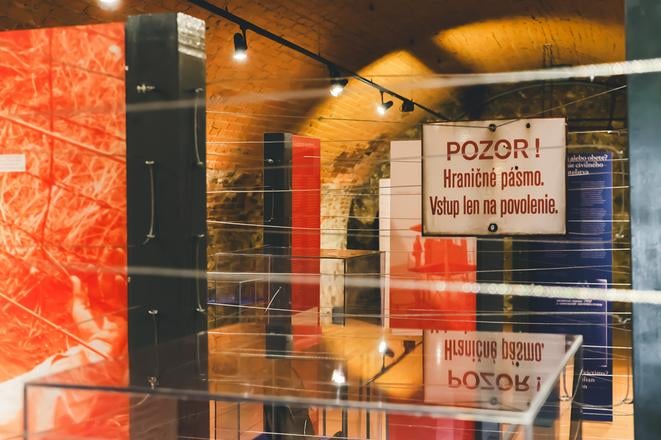Border-free travel, even without a passport, is now routine for Slovaks. During the previous totalitarian regime, however, getting to what the communist regime called the “rotten West” was, for most, an unattainable dream.
More than 40 people paid with their lives for daring to turn that dream into reality by crossing the border without permission. Slovakia, then part of the Czechoslovak Socialist Republic, was divided from the democratic world by the Iron Curtain, a complex of barbed-wire border fences, trip wires, dog patrols, lookout towers and other obstacles that was patrolled by border guards under orders to kill anyone who attempted to flee the country.
Attention, Border! Devín as part of the Iron Curtain in 1948-1989
Devín Castle, part of the Bratislava City Museum (MMB)
Open Tue-Sun 10:00-18:00 until the end of May; during the summer season (June-August) the opening hours will be extended until 19:00
Admission: €8
Border guards who successfully detained someone attempting to cross the border would receive a special reward – a ‘Prim’ brand wristwatch depicting a German shepherd, the breed of dog used by the border guards, on its dial.
“In a very exaggerated way it can be said that a person’s life in socialism had the value of one wristwatch,” said Peter Mikle, director of the Nation’s Memory Institute (ÚPN) Archive and co-author of the exhibition Attention, Border! Devín as part of the Iron Curtain in 1948-1989, which is now open at Devín Castle, near Bratislava. “This actual wristwatch was received by a soldier for detaining some eastern Germans who were attempting to escape to Austria.”
You will read in the article:
how many persons were detained on the Slovak-Austrian border
the role of Devín during the previous regime
why was Devín popular as a location for attempted escapes
what a reward Devin’s citizens received for collaboration with the Border Guard


 The exhibition Attention, Border! Devín as part of the Iron Curtain in 1948-1989 at the Devín Castle (source: Courtesy of MMB)
The exhibition Attention, Border! Devín as part of the Iron Curtain in 1948-1989 at the Devín Castle (source: Courtesy of MMB)